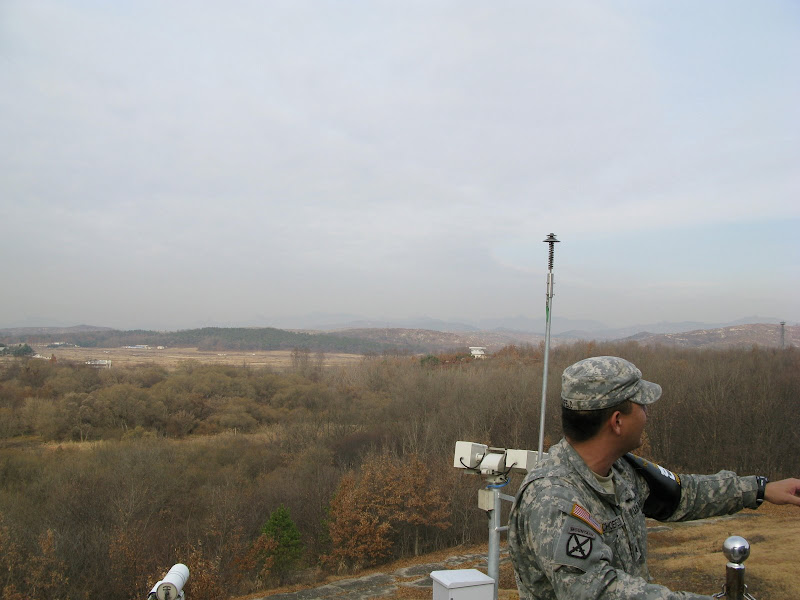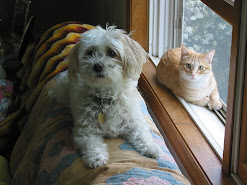 <
< One of the stops on the USO DMZ tour was the site of The Panmunjom Axe Murder which occurred approximately 11:00 am on August 18, 1976. A UNC work force was pruning a poplar tree that was blocking the view between two guard posts. It was considered routine work and had been done by both sides in the past.
A group consisting of 4 UNC guards and 6 Korean Service Corps workers gathered to begin the work of trimming the tree. A KPA (Korean People's Army) guard told them to leave the tree alone. The JSA commander in response placed a 10 man quick reaction force nearby along with additional guards and cameras.
Work began at 10:30 am when at 10:50 am, a KPA lieutenant demanded the work to stop. The officer in charge, Captain Bonifas, directed the work to continue since it was needed and also routine. The KPA lieutenant dispatched reinforcements which grew to about 30 by 11:00 am. Once more the KPA officer ordered work to cease. When it was ignored, he removed his watch wrapping it in a handkerchief and placed it into his pocket. He then ordered his men to "Kill the Americans!"
The KPA took the axes that were being used and attacked the two American officers. The fight lasted a total of 4 minutes. The attack was halted when a truck driver pulled his truck forward to try to protect the American officers. The KPA guards retreated across the Bridge of No Return. Captain Bonifas and Lietenant Barrett were brutally murdered while 4 U.S. soldiers and 4 ROK (Republic of Korea) soldiers were injured. KPA casualties were never known. This all being caught and recorded on numerous cameras. The photo above is from just before the attack occurred.
This is the memorial for the fallen men. The base is the exact size of the original tree. You can see up to the right of the photo one of the guard houses that was being obscured by the tree.
 Another view of the memorial. The tree was cut down August 21, 1976 after troops were scrambled ready for deployment to the area. The removal of the tree was known as Operation Paul Bunyan.
Another view of the memorial. The tree was cut down August 21, 1976 after troops were scrambled ready for deployment to the area. The removal of the tree was known as Operation Paul Bunyan. We also were able to see the North Korean village of Kijong-dong which is known as Propaganda Village. It was known primarily for its extensive loud speaker system that broad casted the praises of Kim Jong-Il. They used to broadcast 6-12 hours a day, mostly at night. The village is uninhabited with 15-20 caretakers that raise and lower the flag and maintain the facilities.
We also were able to see the North Korean village of Kijong-dong which is known as Propaganda Village. It was known primarily for its extensive loud speaker system that broad casted the praises of Kim Jong-Il. They used to broadcast 6-12 hours a day, mostly at night. The village is uninhabited with 15-20 caretakers that raise and lower the flag and maintain the facilities.

















1 comment:
Your tour was much better than ours! I had heard the USO tour was good, but they only have it on certains days. And we weren't there on one of those days. Maybe we need to make a point of taking taking the tour again - it looks worth it.
Post a Comment